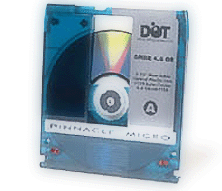 |
|
|
|
In the Forums... |
Posted: May 13, 2000 Written by: Tuan "Solace" Nguyen DVD's Continued... How exactly are DVDs made? A DVD disc is manufactured using almost the same technique that is used for a CD. A developer will make a single DVD disc from the office by using a DVD writer and then take the disc to a duplication facility such as CinRam, Nimbus and or Panasonic. The information from the burnt disc is transferred using software (similar to the burning software you may use at home) to what is called a burner (surprise, surprise) , which guides the laser that brands a glass-topped DVD with the data pattern of dots that vary in terms of spacing and in terms of brightness and darkness. The spacing and variation of brightness and darkness of the dots are what makes the data readable to a DVD reader. Then, a photograph is taken of this master DVD and an etching is made from that photograph. The etching is then used to create a metal stamper. The metal stamper is then used to imprint the pattern of pits and lands into the plastic coating of all following DVDs. DVD-RAM, DVD-RW and DVD-R Eventually, people will want to be able to write to a DVD disc because its capacity is huge -- it can reach 18GB. Currently, there are two formats fighting for becoming the standard, DVD-RAM, and DVD-RW. Both DVD-RAM and DVD-RW are based on similar technologies and both utilize phase-change technology. While DVD-RW is much like CD-RW, DVD-RAM utilizes something a little different – Wobble Land Groove recording. The land-groove method records data on both the lands and the grooves. The wobble method records the tracks so they are not symmetrical (shifting slightly to the left and right) so clock data can be recorded there. There are pits that are equally laid out on the disc which hold addressing information to help locate information on the disc. DVD-R is just like a CD-R and its main advantage is readability in all DVD readers. But like CD-R, it’s only Recordable once. MO Short for Magneto-Optical, this technology uses not only optics, but magnetism as well (like the name suggests). How this technology works is a little more technical than how CD-R’s are recorded. Below is a picture of a typical MO disc.  A thin layer within the media contains magnetically sensitive elements. When this layer is heated to about 200°C (its "Curie" point), the polarity (north and south) of the magnetic elements can be changed by an external magnetic field from the drive write head (similar to that of a hard drive). To write data, two disk revolutions (the actual discs need to be rotated twice) are needed. On the first revolution, a magnetic field is applied but the head and the laser head heats up the target area of the disk to its Curie point. The heat causes the magnetic elements align themselves parallel with the magnetic field. This parallel alignment erases the target area, recording all 0 bits. On the next revolution of the disk, the magnetic field is reversed, and the laser heats up only those areas which are to have 1 bits recorded, leaving the rest 0 bits. |
||
|
| |||
|---|---|---|---|